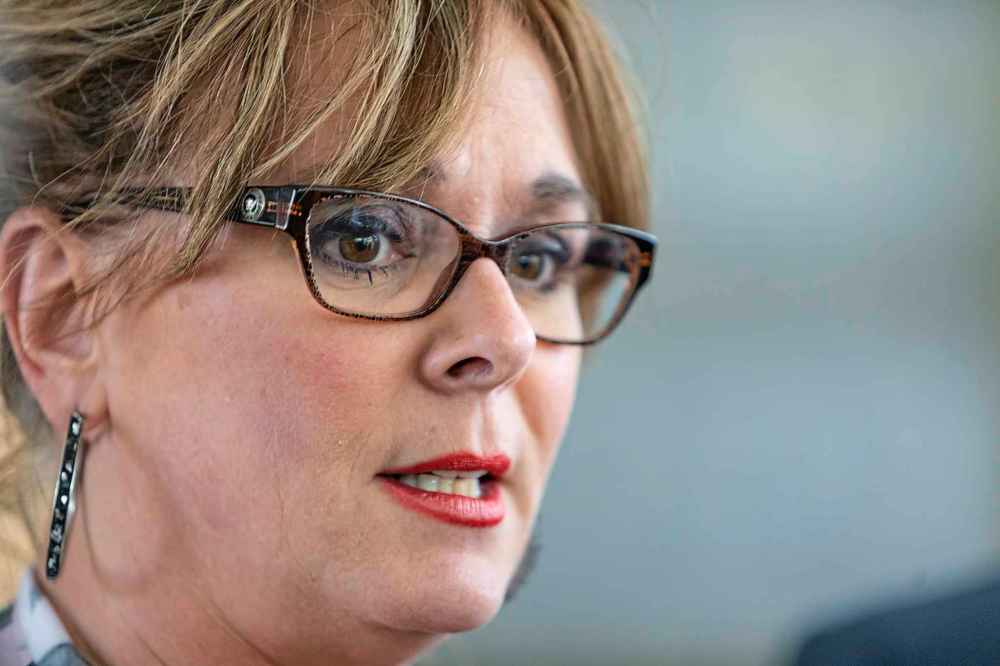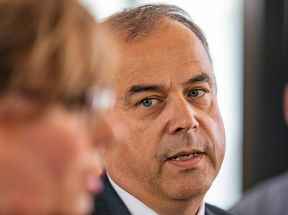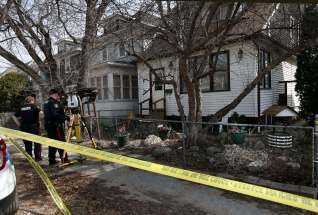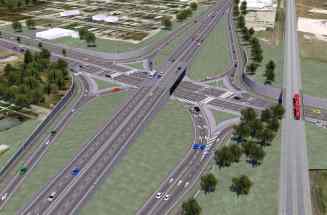St. Boniface ER reached ‘critical and unsafe levels’ of patient flow
Read this article for free:
or
Already have an account? Log in here »
To continue reading, please subscribe:
Monthly Digital Subscription
$0 for the first 4 weeks*
- Enjoy unlimited reading on winnipegfreepress.com
- Read the E-Edition, our digital replica newspaper
- Access News Break, our award-winning app
- Play interactive puzzles
*No charge for 4 weeks then price increases to the regular rate of $19.00 plus GST every four weeks. Offer available to new and qualified returning subscribers only. Cancel any time.
Monthly Digital Subscription
$4.75/week*
- Enjoy unlimited reading on winnipegfreepress.com
- Read the E-Edition, our digital replica newspaper
- Access News Break, our award-winning app
- Play interactive puzzles
*Billed as $19 plus GST every four weeks. Cancel any time.
To continue reading, please subscribe:
Add Free Press access to your Brandon Sun subscription for only an additional
$1 for the first 4 weeks*
*Your next subscription payment will increase by $1.00 and you will be charged $16.99 plus GST for four weeks. After four weeks, your payment will increase to $23.99 plus GST every four weeks.
Read unlimited articles for free today:
or
Already have an account? Log in here »
Hey there, time traveller!
This article was published 13/06/2019 (2375 days ago), so information in it may no longer be current.
On the heels of Concordia Hospital’s emergency room closure, St. Boniface Hospital has redirected visitors away from its own emergency department twice within the past two weeks, due to surges in patient volumes — a process that can normally occur in ERs for a few minutes or hours, but was recommended for a full day Wednesday.
Réal Cloutier, president and chief executive officer of the Winnipeg Regional Health Authority said the St. Boniface ER issues had nothing to do with Concordia’s recent changes.
The northeast hospital converted to an urgent care centre June 3, redirecting patients in need of emergency care elsewhere in Winnipeg. Cloutier said the process has so gone “extremely well” so far.

“This issue is not related to the conversion at Concordia Hospital. This has to do with managing the flow within the emergency department (at St. Boniface),” he said Thursday afternoon.
An internal memo sent to St. Boniface staff Wednesday (and later leaked to media) said the number of emergency department patients had reached “critical and unsafe levels.” The memo’s subject line was “*24 hour Emergency Redirection*.”
It recommended temporarily redirecting patients coming to the ER for follow-up appointments or non-emergency treatment elsewhere.
It’s unclear how many patients were affected by the redirection, though Cloutier said the number was likely “minuscule.”
Martine Bouchard, president and CEO of St. Boniface Hospital, described how, in hindsight, the memo’s language was too alarmist. There were 129 patients seen at St. Boniface’s ER on Wednesday, she said, which was not an abnormally high number, considering its usual volume of 130-150 people.
“So I agree that the title of the memo that you guys have received was perhaps not the best one,” Bouchard told reporters.
Seven Oaks undergoing nursing, support staff changes
As Seven Oaks General Hospital prepares to convert its emergency room into an urgent care centre in September, nursing and support staff are learning what may happen to their jobs and schedules.
Manitoba Nurses Union president Darlene Jackson said many Seven Oaks nurses are upset by the fact their employer wants to convert some eight-hour rotations into 12-hour shifts.
“The majority of them work eight-hour shifts for a reason. And whether it’s a personal commitment, whether it’s a fact that the workload within health care, as it is right now with the nursing shortage, is crushing, it’s heavy. Many nurses don’t want to work more than eight hours at a time. That’s their limit,” Jackson said Thursday. “They’re unhappy that they’ve not been listened to.”
As Seven Oaks General Hospital prepares to convert its emergency room into an urgent care centre in September, nursing and support staff are learning what may happen to their jobs and schedules.
Manitoba Nurses Union president Darlene Jackson said many Seven Oaks nurses are upset by the fact their employer wants to convert some eight-hour rotations into 12-hour shifts.
“The majority of them work eight-hour shifts for a reason. And whether it’s a personal commitment, whether it’s a fact that the workload within health care, as it is right now with the nursing shortage, is crushing, it’s heavy. Many nurses don’t want to work more than eight hours at a time. That’s their limit,” Jackson said Thursday. “They’re unhappy that they’ve not been listened to.”
Jackson said the union is in talks with Winnipeg Regional Health Authority and Seven Oaks officials to try to come up with a solution.
WRHA president and chief executive officer Réal Cloutier said scheduling changes will never please everyone.
“I can tell you, you can talk to a group of nurses and you will not get consensus on what is preferred: eight hours or 12,” he said. “You design your rotations based on patient need and what is the best and most effective way to organize. And some nurses love 12-hour shifts. Others hate it.”
Seven Oaks support staff are going through a similar process. Their union, CUPE 204, said hundreds of employees are being directed into a “bumping process” next week, whereby they will be served deletion notices and have to choose new jobs and rotations ahead of the ER conversion.
“The government should seriously consider cancelling the plan to close the Seven Oaks ER before hundreds of staff enter into this disruptive and demoralizing process,” said CUPE 204 president Debbie Boissonneault in a prepared statement this week.
“Once we go down this path it will be very difficult to turn back time, and with morale so low we are very concerned for the well-being of our members.”
— Jessica Botelho-Urbanski
She noted a surge in patient numbers Wednesday afternoon, but couldn’t yet say how many people it involved nor what time it happened. The redirection protocol was lifted by Thursday afternoon, within less than 24 hours of it being issued.
“These are stressful times, and that’s all I’m going to say,” Bouchard said. “They’re stressful times. We need to meet face to face, and we need to find the proper solution for this.”
Bouchard was scheduled to meet with her executive team later Thursday. After about 40 minutes with reporters, she left the room, leaving Cloutier to answer questions on his own.
The WRHA head agreed the title of the memo was “not an appropriate label for what was going on.” He questioned why it was sent in the first place, along with another memo apparently sent to staff last Monday when a similar incident occurred.
“When I saw the memo last week, Martine and I spoke and we said, ‘We’ve got to manage the communication on these issues,’ because, quite frankly, we have a process internally within the hospitals to manage flow… So we use that system,” he said.
“I think the danger with this type of communication is No. 1: you all misinterpreted what it meant,” Cloutier told reporters. “No. 2: it actually doesn’t add to the flow measures that we already have in place to be able to manage patient care.”
Opposition critics made clear the provincial government ought to be shouldering blame for problems arising in the health-care system.

“For more than two years now, people have been warning this government that once they close the Concordia ER, there’s going to be a huge surge of patients (elsewhere). Here at St. Boniface, what happens? They close Concordia ER. A week later, for the first time ever, they have to start turning away patients at St. Boniface Hospital,” NDP Leader Wab Kinew said.
“And where is the premier in all of this? Where is the government? They’re not able to respond adequately because of this artificial blackout that they’ve put in place.”
(The Tories’ self-imposed blackout on government announcements and advertising began Wednesday, in advance of an expected election call.)
Liberal Leader Dougald Lamont emphasized Health Minister Cameron Friesen and Premier Brian Pallister ought to be answering questions.
“Quite frankly, I think the WRHA and certainly the St. Boniface Hospital have been put in a sense in an impossible position because they’re having to answer for the decisions of the Pallister government,” he said.
Friesen was not made available for an interview Thursday, but sent a prepared statement addressing some of the concerns at St. B.
“Patient volumes are unpredictable and surges are a common occurrence in health care. Internal redirection requests occurred long before system change began and will occur again in the future,” he said by email.
“I’ve spoken to the CEO of the WRHA and instructed him to work with officials at St. Boniface Hospital to ensure they have appropriate resources in place and that clinical leadership follow proper protocols when communicating concerns.”
jessica.botelho@freepress.mb.ca
Twitter: @_jessbu














